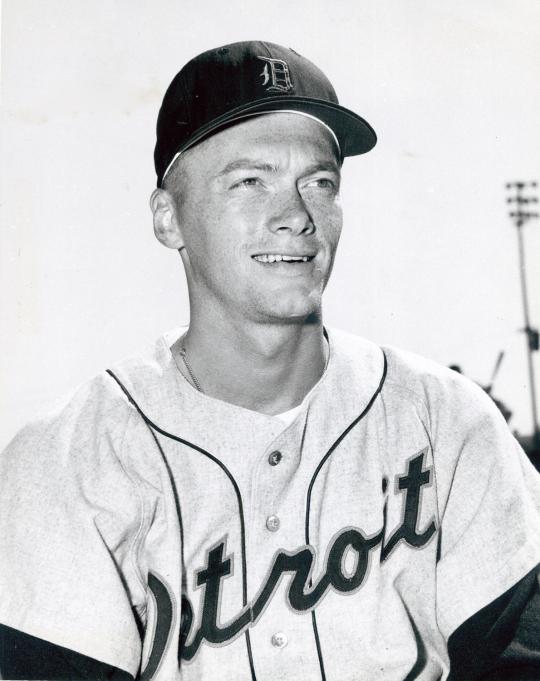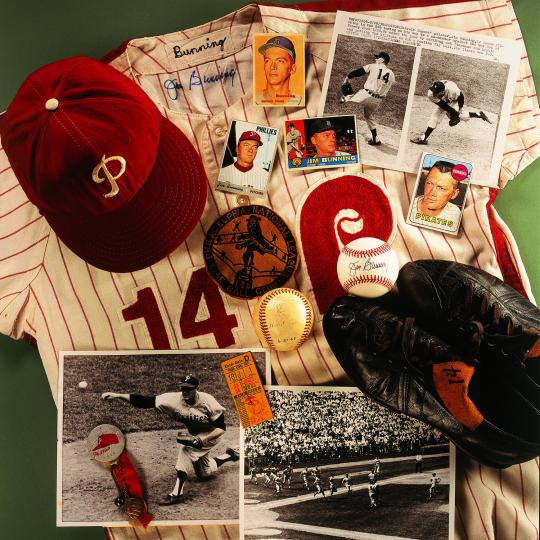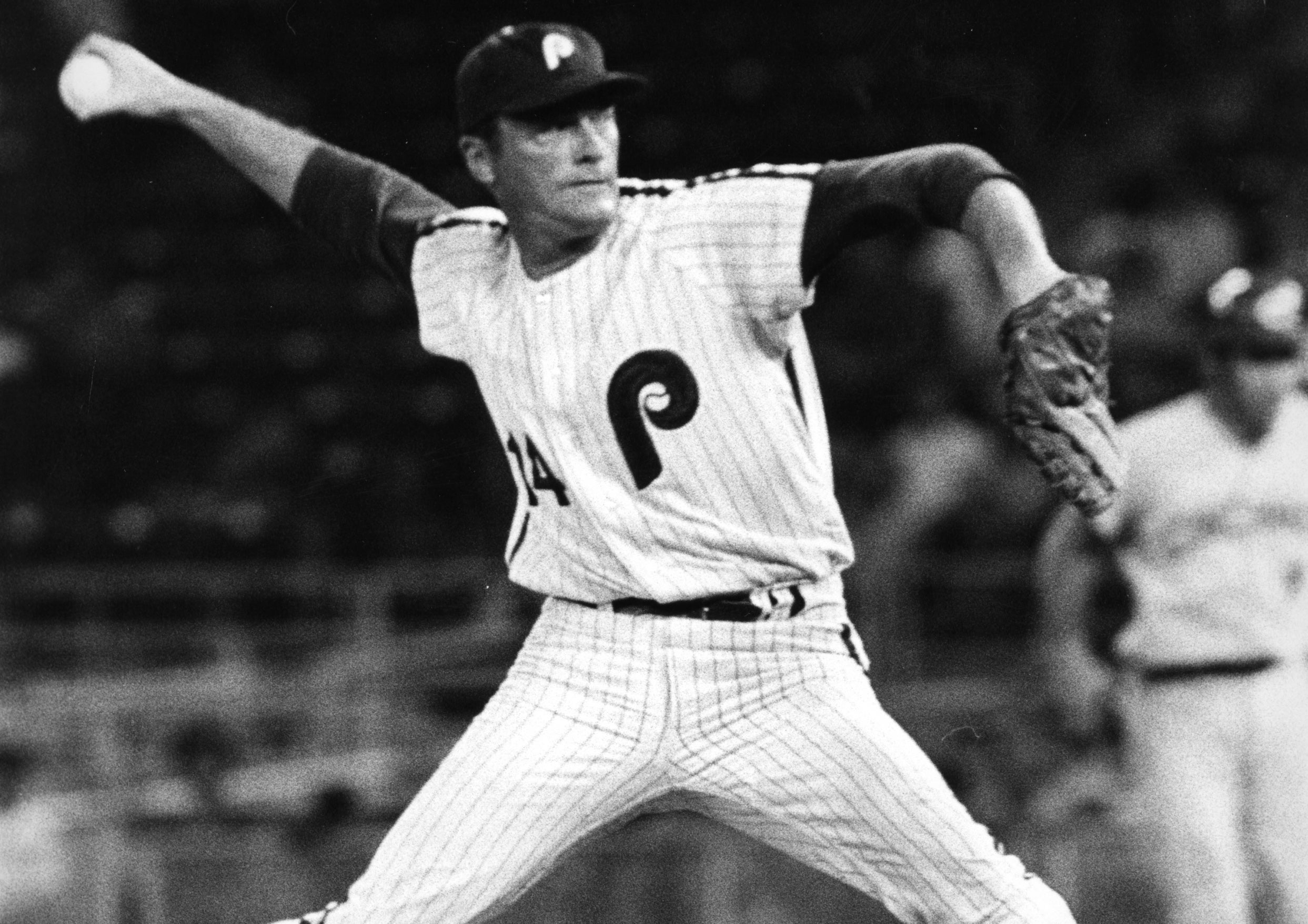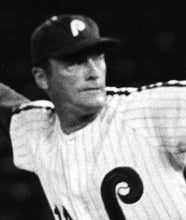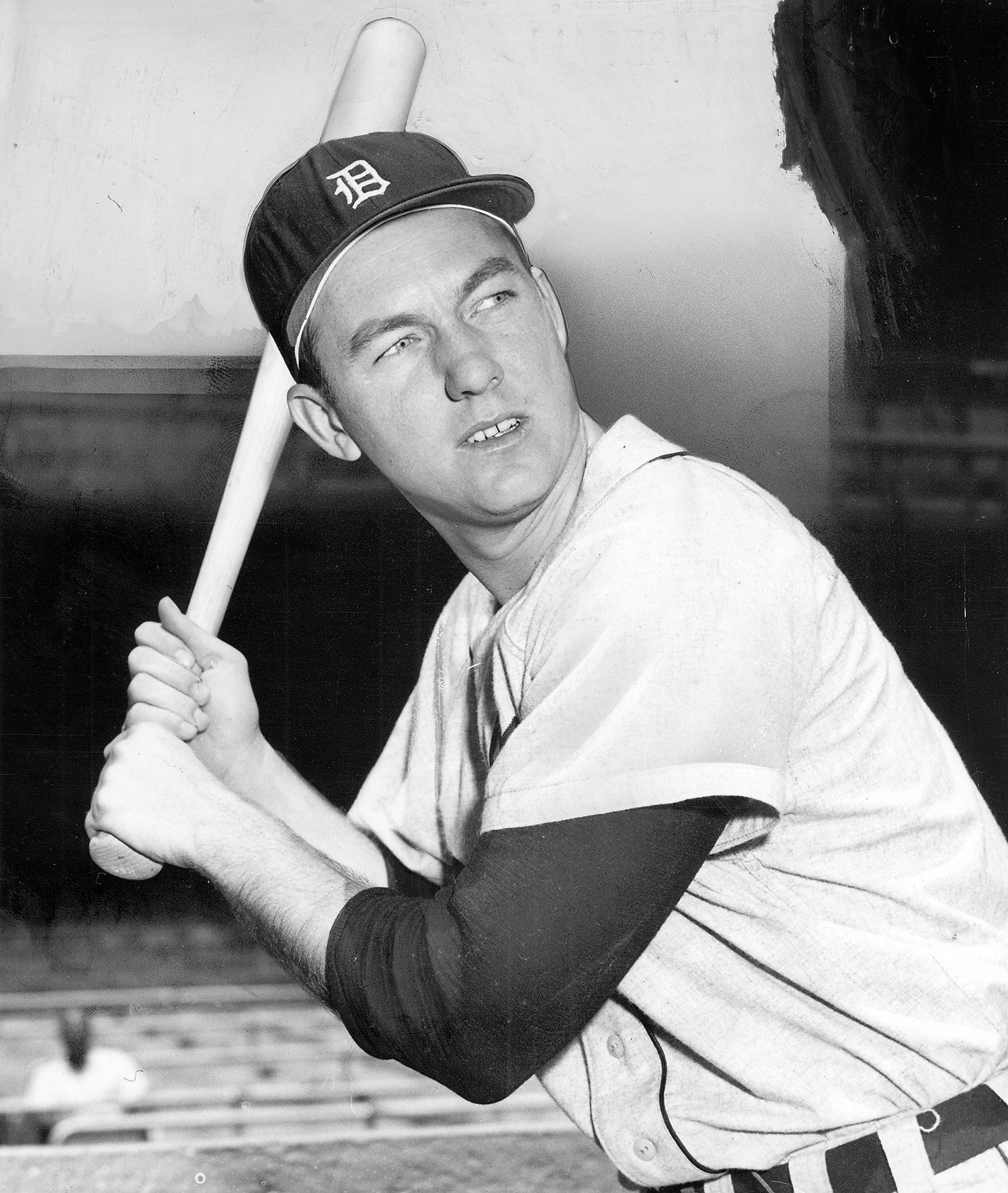- Home
- Our Stories
- Jim Bunning Throws His First No-Hitter
Jim Bunning Throws His First No-Hitter
Jim Bunning only had one winning season out of a six-year stay in the minor leagues. But once he reached the majors, Bunning quickly started down a path toward Cooperstown.
On July 20, 1958 – three years after his big league debut – the lanky 26 year old from Southgate, Ky., etched his named into the record books with what would be his first of two career no-hitters.
Bunning, who completed his day’s work by getting Ted Williams to fly out to right, credited his transformation from average Jim to elite right-hander to one pitch: the slider.
“I always had a pretty good sinking fast ball. My curve – when it was breaking – was good enough. But when it wasn’t breaking, it was awful sad, believe me,” he told the Sporting News . “So I made up my mind I’d have to develop another pitch to stick in the majors. I hooked on with a Cuban League during the winter of 1956, and started experimenting on a slider. I used that pitch 90 percent of the time, but I didn’t care how hard they hit me at first. I just wanted to perfect it.”
After a 20-win season in 1957, Bunning rode the slider to the no-hitter – a 12-strikeout gem against the second-place Red Sox. The closest the Red Sox came to getting a hit was on a grounder by Pete Runnels in the first inning.
“I was going for (the no-hitter) from the sixth inning,” Bunning told the Sporting News. “In fact, I told some of the fellows to keep digging for those balls because I was going to make it.”
Jim Bunning played for the Detroit Tigers from 1955-1963, during which he made five All-Star appearances. (National Baseball Hall of Fame)
Share this image:
Hall of Fame Membership
There is no simpler, and more essential, way to demonstrate your support than to sign on as a Museum Member.
Tigers Gear
Represent the all-time greats and know your purchase plays a part in preserving baseball history.
Referred to as the “gabbiest” no-hitter of all time, Bunning defied superstition by talking his way through nine hitless innings. Bunning didn’t back down when Williams came up to the Fenway Park plate with two outs in the bottom of the ninth. Williams – who had hit a walk-off home run the night before – ended up hitting a fly ball right that settled into the glove of his fellow future Hall of Famer, Al Kaline.
The third Tiger pitcher to record a no-hitter, the game was a harbinger of his future greatness. The young side-arming right hander would throw another no-hitter six years later – a perfect game against the Mets on Father’s Day 1964 – and would become the second pitcher in history to reach 1,000 strikeouts and 100 victories in both the National League and the American League.
He would later reminisce on both of his no-hit games, recalling that “You can’t plan it. It’s not something you can try to do. It just happens. Everything has to come together – good control, outstanding plays from your teammates, a whole lot of good fortune on your side and a lot of bad luck for the other guys. A million things could go wrong – but on this one particular day of your life none of them do.”
After throwing his first no-hitter against the Red Sox on July 20, 1958, Jim Bunning became the third Tiger to reach the milestone. (Milo Stewart Jr. / National Baseball Hall of Fame)
Share this image:
Alex Coffey was the communications specialist at the National Baseball Hall of Fame

